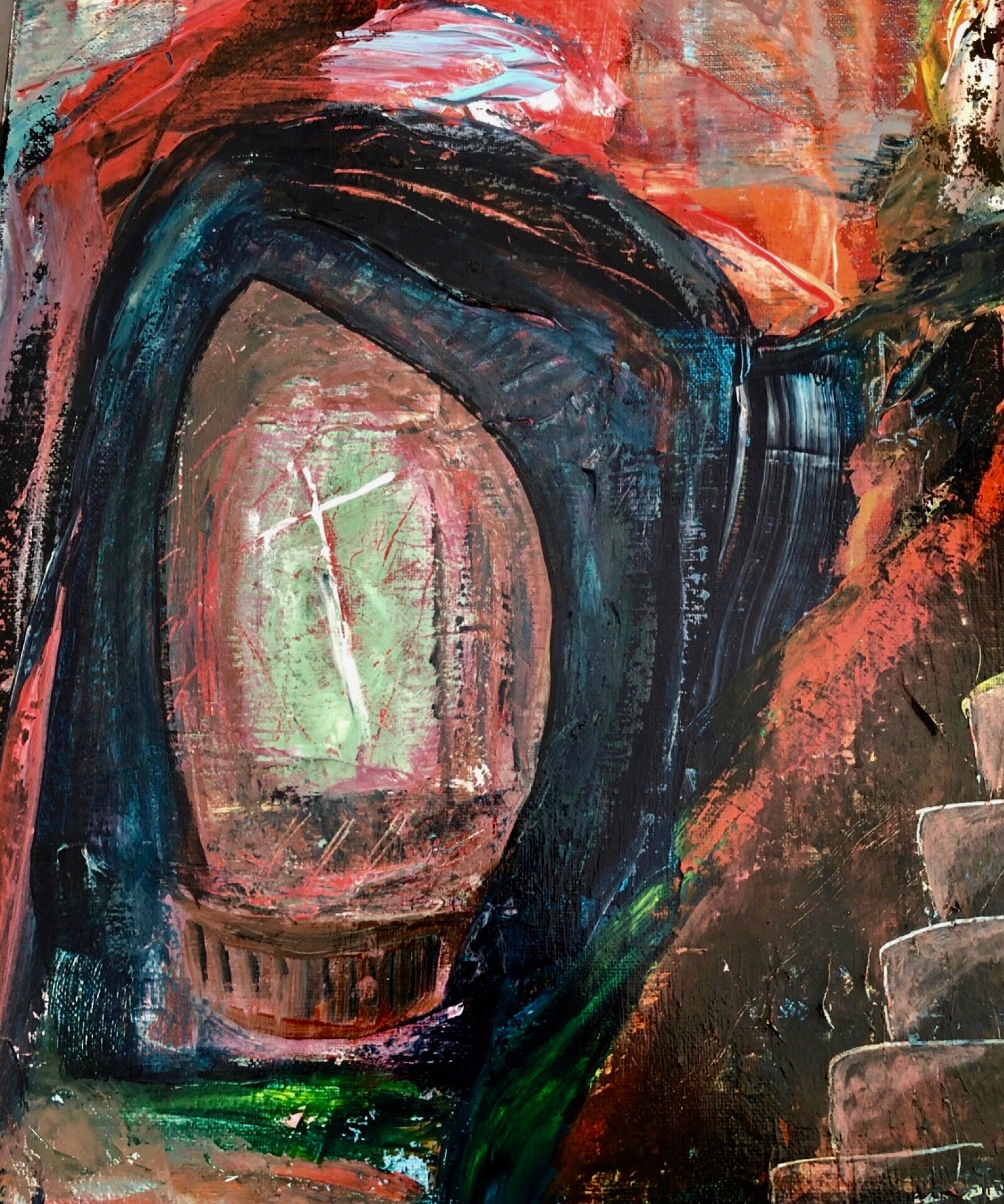Already and Not Yet
We have been taking a stroll through the parables this summer – the stories taught by Jesus and written about in the synoptic gospels – Mark, Matthew and Luke. In the parables we are given hints or glimpses of different aspects of the ‘kingdom of God’ - what it is all about. The two phrases – the kingdom of God and the kingdom of heaven – are interchangeable and are found 162 altogether in the first three gospels.
I know that several of you are having trouble with this idea that the kingdom of God is in the here and now, because there is this idea floating around that the kingdom of God, being the kingdom of Heaven, is something that happens after we die – well, if we are good, or so the story goes. But this is actually a very recent interpretation of the phrase, one that has only been in common usage since the 20th century. There are other interpretations, more ancient and in existence before the creation of the religion we know, and claim, as Christianity.
Might I suggest that the kingdom of God is Already and Not Yet? It is already in existence, both in this world and beyond, and not yet realized in this world, nor fulling alive as long as we are living. As we work with non-binary concepts and paradoxes – Jesus’ specialty – we can say that Yes, the kingdom of God is already here, and it is not yet fully complete.
Call to Worship
The Cross in the Cave, Painting: Bruce Ley painting Writing: Candice Bist
I have seen the cross perched high,
A grand impressing thing, it was,
In the midst of a pastoral nowhere,
And I recoiled at its presence on the top a lovely, grassy knoll,
And this surprised me.
But I have learned to trust my body’s wisdom.
It is far more accurate than the faulty mind,
It tells truth, when lies would rather suffice.
Was not the dreamy space already sacred?
Why did the placement of those two timbers crossing themselves cause me to flinch?
For my faith, for the tender people of this world, for all the muddled metaphors that lead to cruelty.
Keep out it said.
This is ours and we will not share.
And I wondered how the body of a man stretched out to include everyone had morphed into this blasphemy of adamantine claim.
I have always thought my own body the cross,
In its better moments,
My feet firmly grounded in this moment, this space,
My chin tilted upwards to the heavens for inspiration,
My arms wide open to all the possibilities
My heart vulnerable and unafraid.
But here is another cross, I had not pondered,
It seems thin, frail, needing support,
Hidden and unsure,
Tentative, left behind, forgotten,
In a cave of some kind.
And I wonder at the artist’s heart,
How he finds this cross, leaning against a cave wall,
Left unattended,
And yet.
For all that it is forgotten, there are nearby the steps to heaven
Oh, not some flimsy imagining,
The real heaven of moments cherished,
Those sparkling seconds we choose to gift the world with our largess,
Our yes, and….
The cross is not a symbol of triumph.
It is not a symbol of power.
Neither is it a symbol of a particular faith, though one has claimed it as their own.
It is a thing of tenderness. A hidden matter, not a boastful one.
Its strength lies in its hesitation to claim.
When one has spent time in the cave of contemplation, the forgotten room of loneliness,
And still clung to love, …
The stairs to heaven appear as of out of nowhere, leading to who knows where….
“There is something bigger than fact: the underlying spirit, all it stands for, the mood, the vastness, the wildness.”
“Everything is a miracle. It is a miracle that one does not dissolve in one’s bath like a lump of sugar. ”
Discover the history and symbolism of Pablo Picasso’s powerful anti-war mural, “Guernica,” rendered in his signature Cubist style. -- In 1937, in one of the worst civilian casualties of the Spanish Civil War, Fascist forces bombed the village of Guernica in Northern Spain. For Pablo Picasso, the tragedy sparked a frenzied period of work in which he produced a massive anti-war mural, titled “Guernica.” How can we make sense of this overwhelming image, and what makes it a masterpiece of anti-war art? Iseult Gillespie investigates.
The Chinese writer Lu Hasan wisely observed that hope cannot be said to exist, nor can it be said not to exist, for it is like the roads across the earth, which were not roads to begin with, but only came into existence when people passed a certain way and thus a road was made. In the same way, the kingdom of god cannot be said to exist, nor can it be said not to exist, for though its tenets and boundaries and spirituality have been offered to us, it can only be seen and realized, at least in our lifetime, if we follow its lead, and make choices that usher it into being.







